A Guide to the Depth Gauge Watches
Watches prepared for extreme underwater adventures!
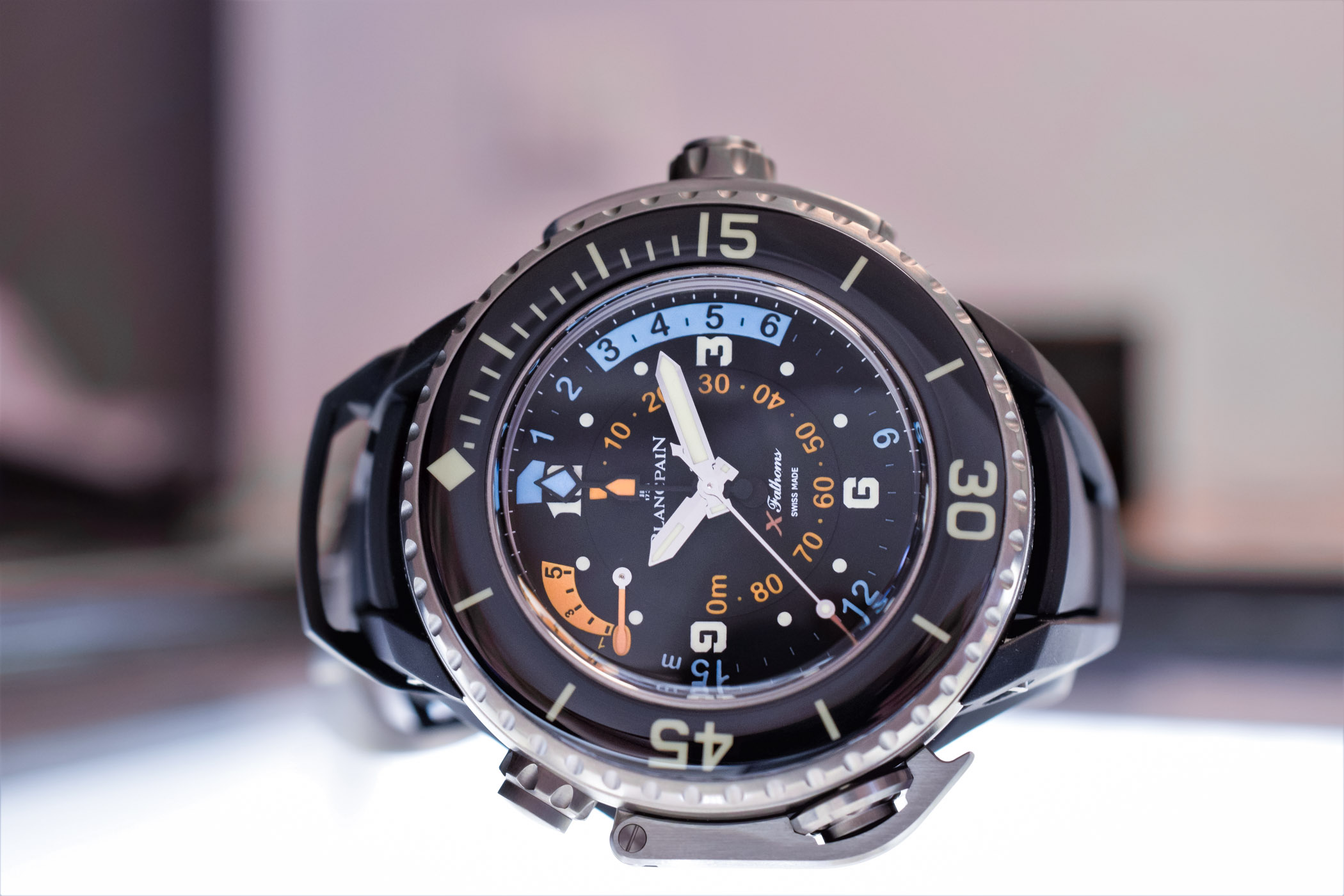
If scuba diving is a popular recreational sport, it is a dangerous activity that needs to be properly prepared and monitored. If a diver ascends too quickly, this can lead to decompression illness that can be painful and life-threatening. As depth increases the physiological effects become greater. A reliable dive watch and a depth gauge are essential pieces of diving gear designed to monitor depth and track the duration of an underwater adventure. Both variables are needed to use decompression tables. Traditionally, divers used a dive watch and a depth gauge to calculate decompression time at given depths. Although many divers today choose to dive with a computer, some still use a mechanical depth gauge, even if only as backup.

A handful of manufacturers have developed watches incorporating a mechanical depth gauge, starting with Favre-Leuba, Nivada and Aquadive in the 1960s. For practical purposes, these depth gauge watches were designed to substitute stand-alone depth gauges (or dive computers). These rare models and their engineering are fascinating… and you do not need to be a diver to love them!
From a technical perspective, several solutions have been used. Here are a few examples of watches fit with a depth gauge (bear in mind that we only cover mechanical watches at MONOCHROME and the list of models featured is not exhaustive).

The Bourdon tube, invented around 1850, is still one of the most widely used devices for measuring the pressure of liquids. It is made of a flattened circular tube coiled into a circular arc. When pressurised, the tube tends to straighten, activating a pointer. For instance, this system was used for the 1999 IWC Deep One (photo above). The watch features two hands, one to show your current depth, the other to record the deepest depth of your dive.
Membranes or aneroid capsules are another solution to translate increasing pressure into a depth reading. Membranes have been used for the IWC Deep Two and Deep Three. Unfortunately, IWC has recently decided to remove the Deep Three from its current collection, meaning that the brand doesn’t offer a depth gauge dive watch anymore.
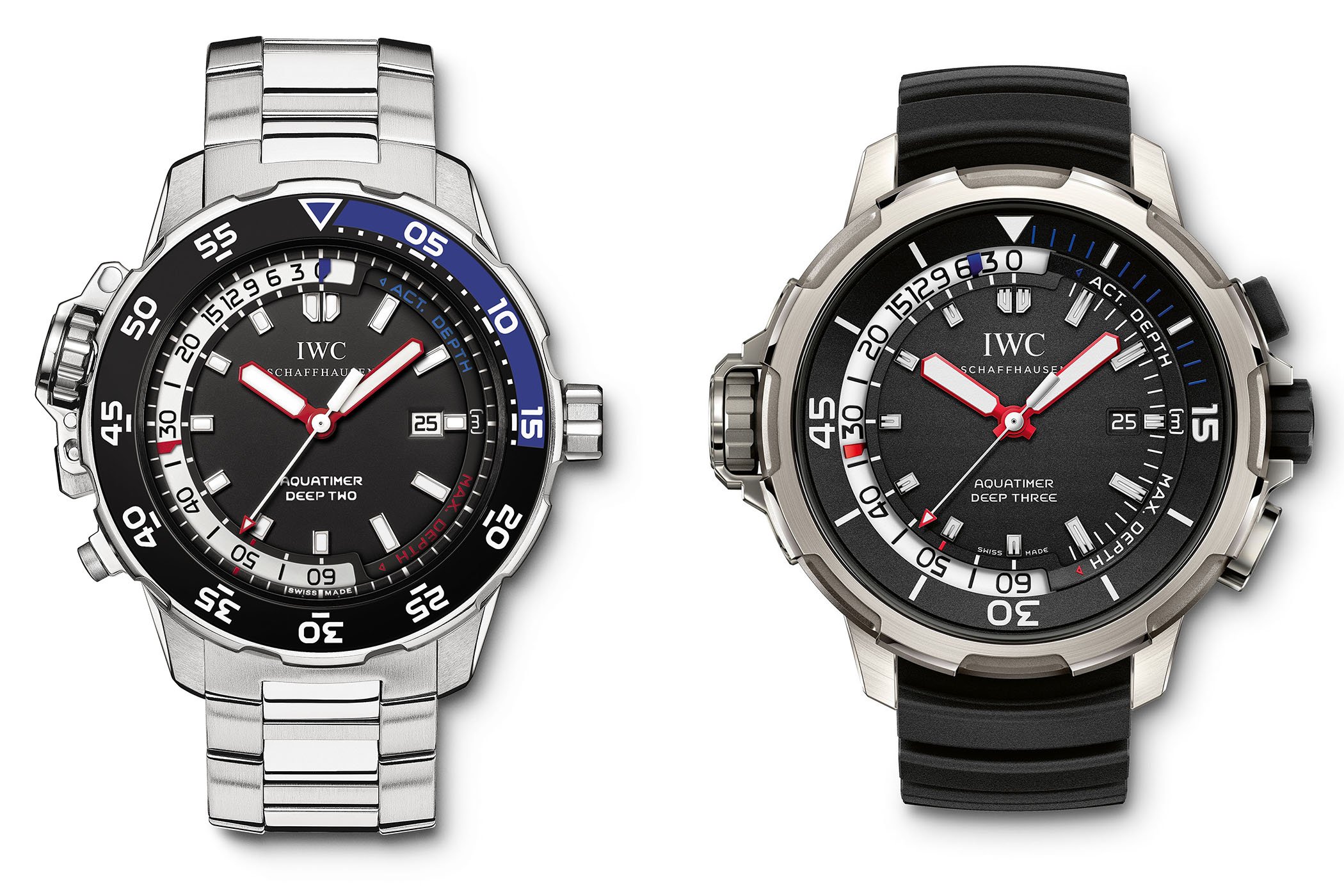
The following rendering of the Jaeger-LeCoultre Master Compressor Diving Pro Geographic provides an example of how a pressure-sensitive membrane, linked to a series of gears and a rack and pinion is used to move a hand.
Among recent developments, the gargantuan Blancpain X Fathoms also uses a membrane crafted in amorphous metal. This beast of a concept watch is 55.65 mm in diameter; it measures depths of up to 90 metres with maximum depth memory and a separate indication of the 0-15m zone with +/- 30cm precision. A retrograde 5-minute counter is featured for decompression stops.

With the Raider Bathy MemoDepth presented at Baselworld 2018, Favre-Leuba uses an aneroid capsule to measure depth. Its caseback features a grid that allows the water to establish contact with the aneroid capsule. As the pressure increases with depth, the capsule contracts. Linear motion is transmitted to a gear mechanism and converted into a rotational movement. The watch indicates depth on two scales: the centre hand, coaxial to the hours and minutes, shows the current depth. The 3 o’clock sub-dial records the critical maximum depth reached (up to 120m); this indication is secured with a reset pusher at 4 o’clock.
Another simple, pragmatic and reliable solution to producing a depth gauge watch is the use of a capillary tube. For instance, the Oris Aquis Depth Gauge features an inlet in the crystal at 12 o’clock and a channel milled into the edge of the crystal (that is 50% thicker than an average top glass).

The inlet allows water into the channel as the diver descends into the deep. As pressure builds, the air in the channel is compressed and water pushes its way into the channel. The depth is read on the scale around the dial thanks to the separation between the air and water.
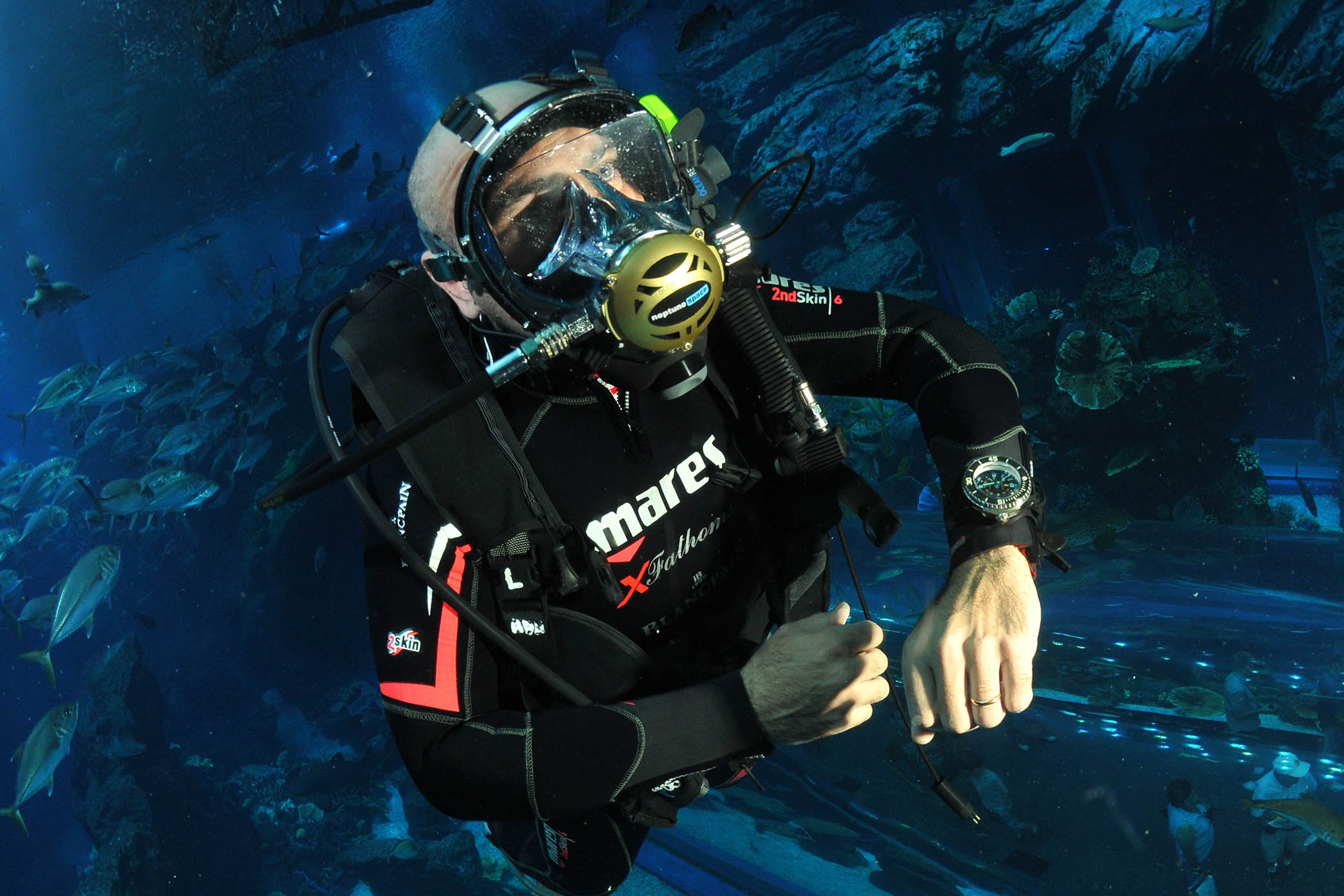

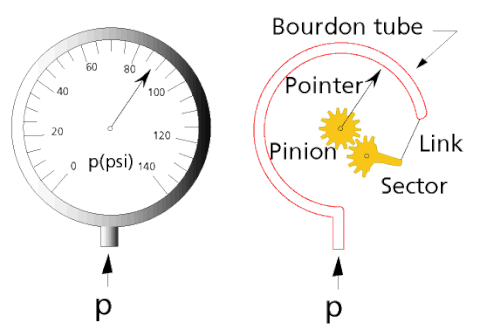
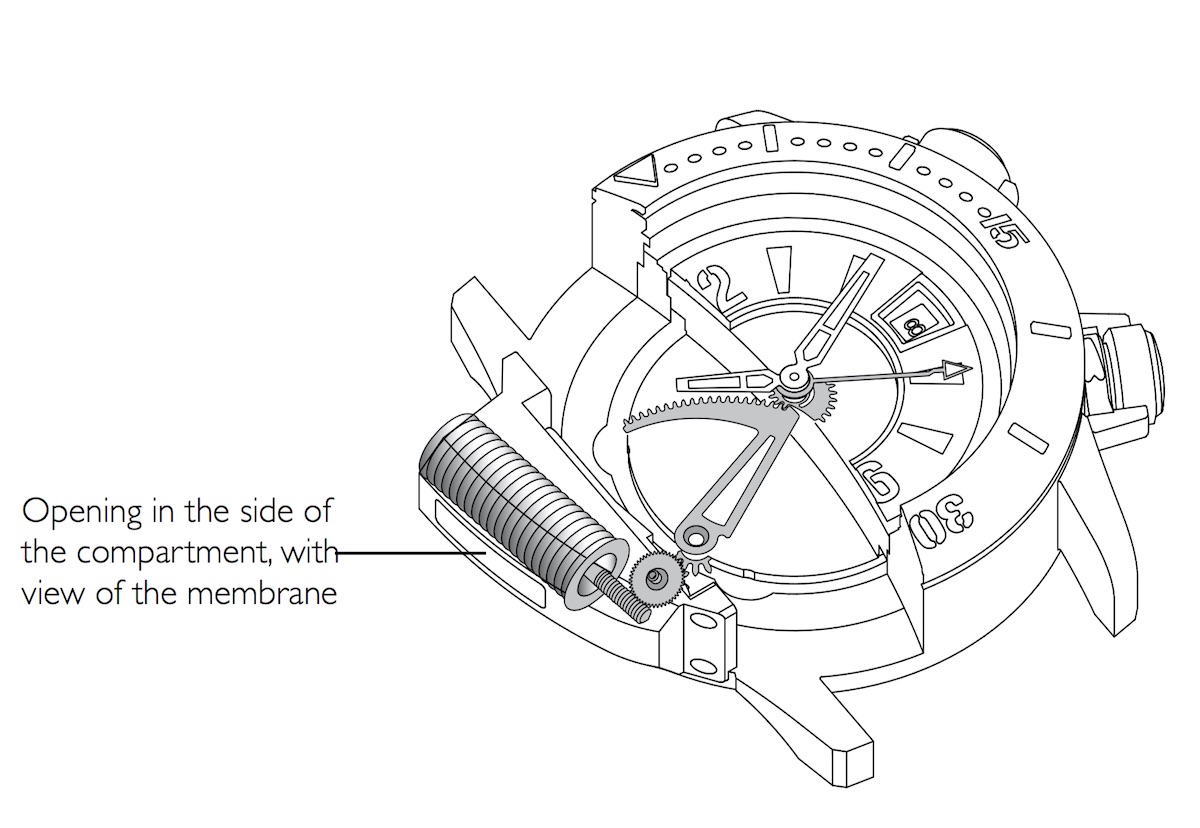
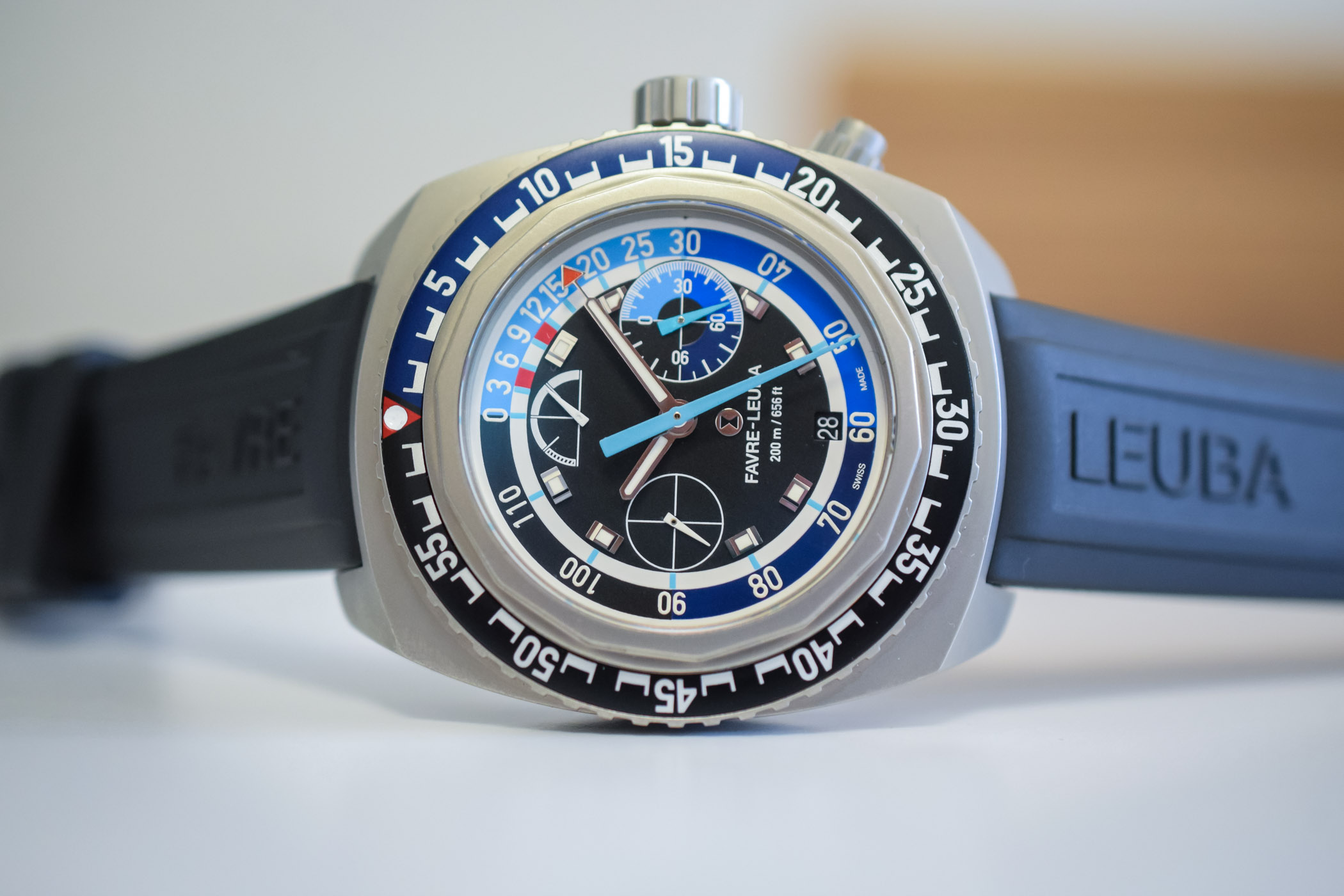
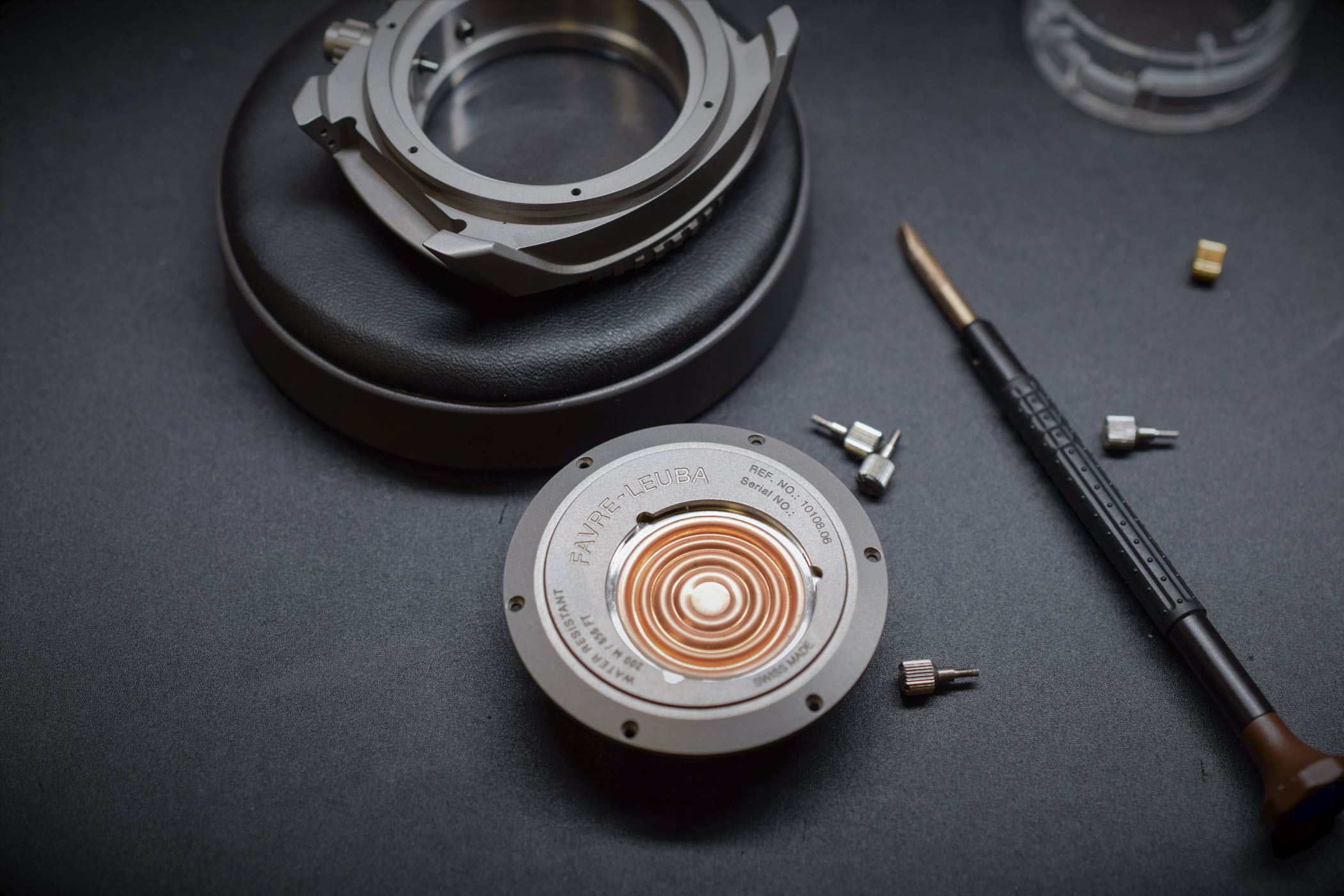



7 responses
Hi Xavier,
thanks for this article and for the explanation on different techniques used to show the diving depth. It would be great to know also on the even more resticted family of altitude measuring mechanical watches (I’m sure there are more alpinists out there than divers being me one of them LOL)
Regards,
slide68
Thanks Andrea, we have a video in preparation about an altimeter watch that might help! All the best,
Hi Xavier,
do you know the CHRIS BENZ Depthmete Chonograph and what would be your assessment on this watch ?
Thx
Hi Jean, Sorry I do not know the watch so cannot really help. Xav.
Great article and it explained a lot. It seems like each method is pretty efficient in showing the wearer their depth. Do you know if one type is more precise than another? I’m trying to find a watch or instrument for use with a science experiment where I would want to measure the depth or pressure within an inch of precision, especially within the top 12″ of the surface of the water.
@chris thanks, in all honesty, no additional input on the best method for your experiment.
Chris. For the accuracy you are looking for, there is a chance that a U tube manometer would be the tool of choice. I think it would be hard to get the accuracy from a watch designed to give a broad range of pressures that could produce the precision you need.
I suggest reading the following article. https://www.digivac.com/manometer-101-understanding-how-manometers-work/#:~:text=You%20can%20make%20a%20simple,of%20pressure%20on%20each%20side.
I worked in a chemical R&D laboratory for a major corporation and was able to access some pretty sophisticated instrumentation (NMRs, electron microscope, GC, LC), yet for pressure we often used a U tube manometer with water, mercury or colored alcohol depending on the precision and range in which we were working. Much like Boyle would have used in his work in the 17th century.
If it ain’t broke, don’t fix it.